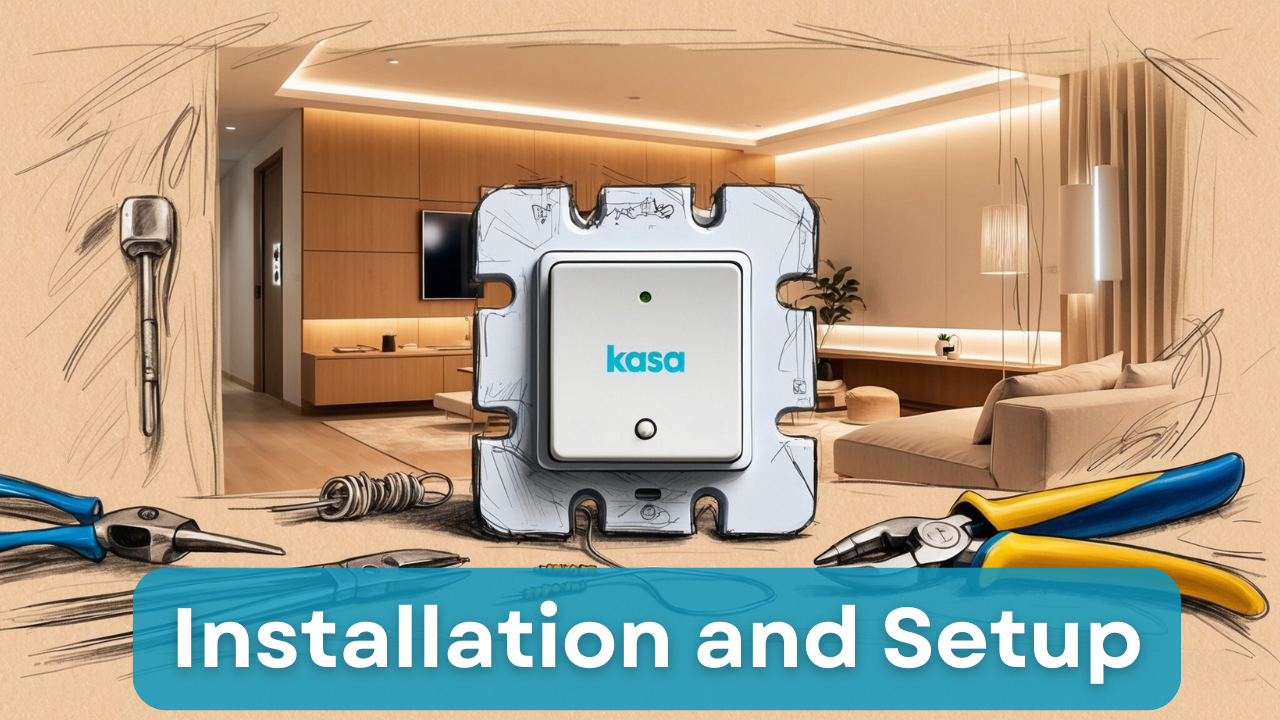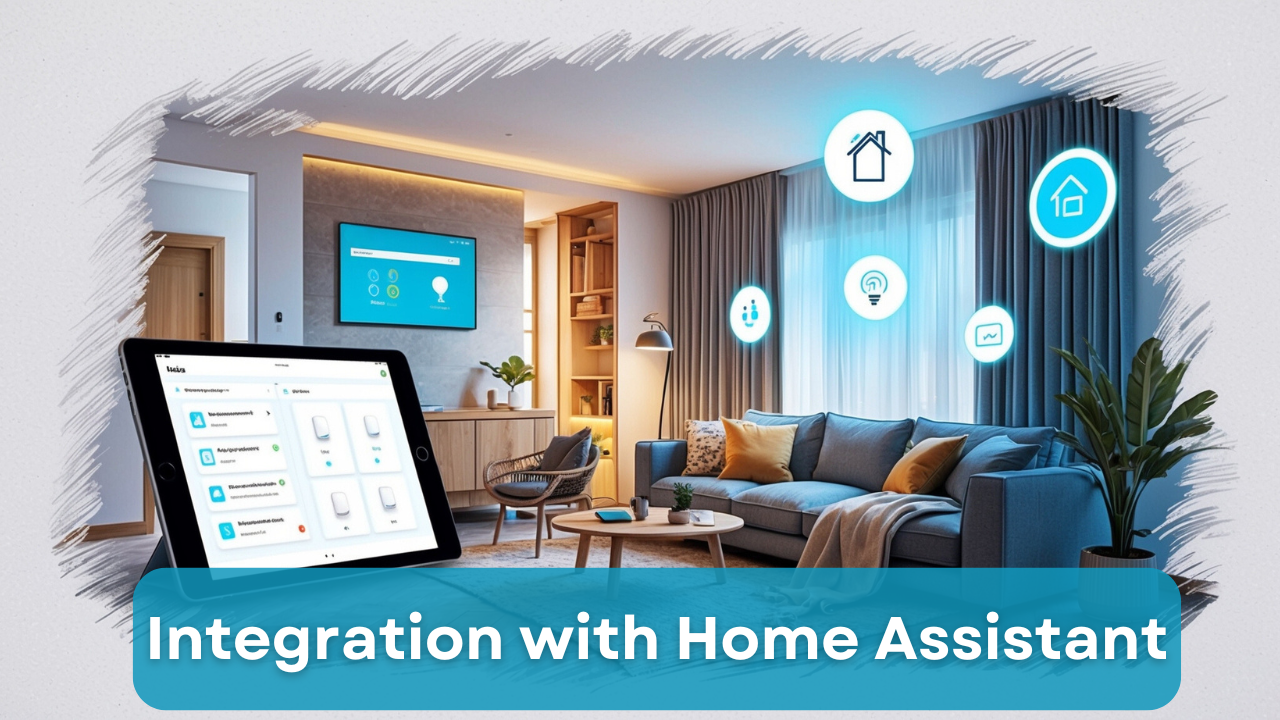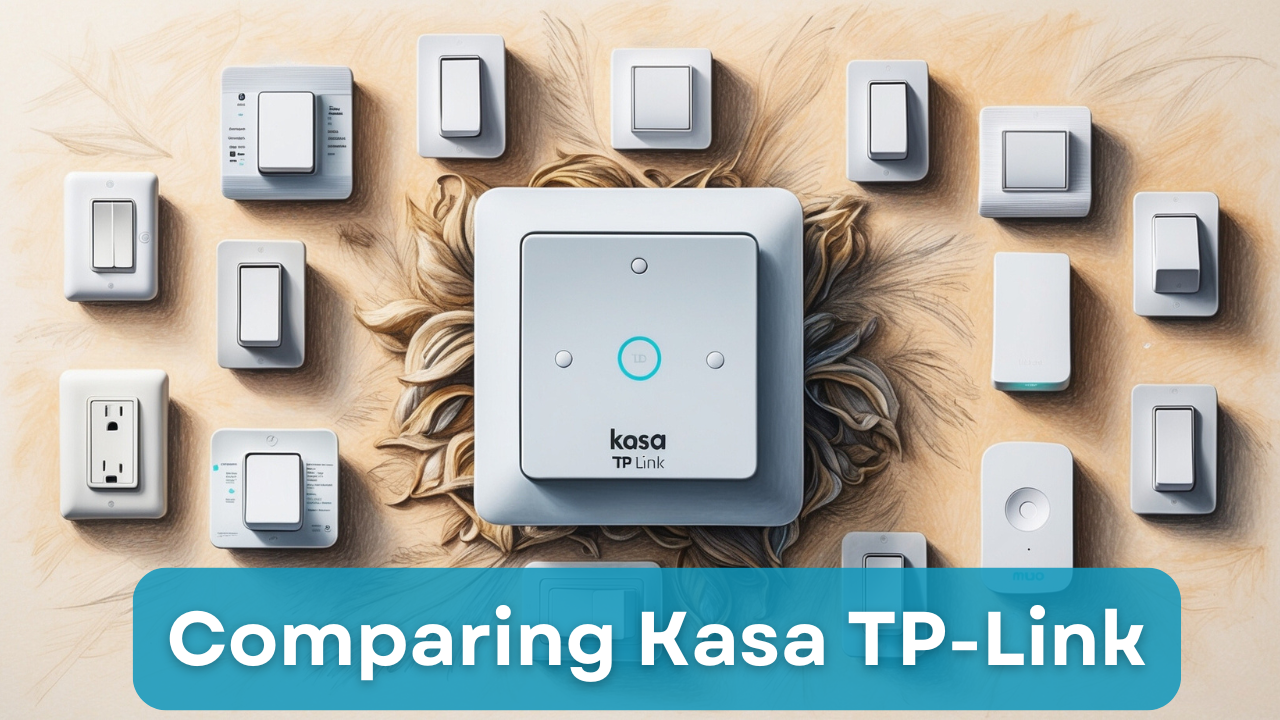This Tiny Device Is Changing Homes Everywhere—Is Yours Next?
Learn how Kasa TP-Link Smart Switches make home automation easy. From quick installation to Home Assistant integration, these switches offer energy-efficient, voice-controlled lighting. Explore their features and find out why they’re a top choice for smart home enthusiasts

In today's tech-driven world, smart home technology is no longer just a luxury; it’s becoming a necessity for many. With the ability to control and automate everyday tasks, smart devices can make your life more convenient, more secure, and even more energy-efficient. Among the top contenders for smart home upgrades, Kasa TP-Link Smart Switches stand out as a reliable and feature-packed solution for managing your home’s lighting.
These smart switches don’t just let you turn lights on and off—they come loaded with useful features like remote control from anywhere via your smartphone, voice command compatibility with popular platforms like Amazon Alexa and Google Assistant, and the ability to set schedules for when your lights turn on or off. Beyond that, they integrate seamlessly with Home Assistant (check compatibility here), allowing you to create a fully automated, connected environment. In this article, we’ll explore why I think Kasa TP-Link Smart Switches deserve a place in your smart home setup and how they can level up your living space.
***WARNING / DISCLAIMER***
By using the information in this guide, you acknowledge that I provide no express or implied warranties regarding the accuracy, completeness, or applicability of the content. I am not responsible for any direct, indirect, incidental, or consequential damages—including but not limited to property damage, equipment failure, injury, or death—that may arise from following these instructions.
Working with electrical wiring and mains-level voltage is inherently dangerous and poses a serious risk of injury or death. If you are unfamiliar with electrical systems, do not attempt this installation. Instead, consult a licensed electrician to ensure all work complies with local building codes and safety regulations specific to your area.
By proceeding, you accept full responsibility for your actions and agree to indemnify and hold me harmless from any legal claims, liabilities, or damages.

One of the biggest perks of Kasa TP-Link Smart Switches is how easy they are to install, even if you're not an electrician. While working with electrical wiring can seem intimidating, the setup process for these smart switches is designed to be as user-friendly as possible. With a little patience and some basic tools, you’ll have them up and running in no time.
Before you start, it's always a good idea to review the installation guide that comes with the switches—it’s detailed and really helpful. Even though I’ll walk you through the steps, their guide has some diagrams that can make your installation smoother.
How to Install Your Kasa Smart Switch (Without Losing Your Cool)
It's crucial to ensure that the switch you're replacing has a neutral wire in the same box, as these switches require it for operation. In some older homes, the neutral wire wasn’t run to the light switch, which can be a common issue during installation. While these switches offer great features, needing a neutral wire is one trade-off to be aware of before getting started.
- Turn Off the Power: First things first—safety! Flip the breaker to cut power to the switch you’re replacing. Double-check it's off by testing it with a non-contact voltage tester after you've removed the cover plate.
- Remove the Old Switch: Unscrew and pull out the existing switch to expose the wires behind it.
- Find the Neutral Wire: Kasa Smart Switches need a neutral wire (typically white) to work. If your switch box doesn’t have one, you might want to consult an electrician.
- Connect the Wires: Match up the wires from the smart switch to those in your wall—line, load, neutral, and ground. The switches come with handy wire nuts to help you make these connections.
- Mount the Switch: Once the wires are connected, carefully push them back into the box and secure the switch to the wall using the screws provided.
- Restore Power: Flip the breaker back on and watch as your new smart switch springs to life.
- Set Up in the Kasa App: Download the Kasa Smart app (or open it if you’ve already got it installed), and follow the instructions to connect your switch to your Wi-Fi. You’ll be controlling your lights from your phone in just a few taps.
You only have to complete this step once to get the switch connected to your Wi-Fi
And if you're a Home Assistant user like me, you'll love how easily these switches integrate into your setup. Thanks to Home Assistant's auto-discovery (or, as some like to call it, "auto-magical discovery"), the switches should be detected instantly, and now with just a quick configuration, you're off to the races and can start to automate lighting in ways that go beyond the Kasa app—setting up complex routines and custom triggers that seamlessly fit into your smart home ecosystem.

Kasa TP-Link Smart Switches aren’t just about flipping lights on and off—they offer a suite of features designed to make your home smarter, more efficient, and more secure. These switches add convenience to your daily routine and give you control over your lighting like never before.
Remote Control
Ever forget to turn off the lights before leaving home? Or maybe you want your lights on when you get back after dark? How about you are in bed and don't want to get out? With the Kasa Smart app, you can control your lights from anywhere, whether you’re at the office, out running errands, or even on vacation halfway around the world. It’s not just about convenience either—having this kind of control can save energy and enhance security by ensuring your lights are exactly how you want them. By adjusting your lights remotely, you can also make it look like someone’s always home, adding an extra layer of protection for your home.
Voice Control
Imagine being able to control your home’s lighting without lifting a finger—literally. Kasa Smart Switches can integrate smoothly with Amazon Alexa, Google Assistant, and even Microsoft Cortana, and let's not forget Home Assistant. All of which lets you manage your lights using simple voice commands. Perfect for those moments when your hands are full or when you’re too comfortable to get up. Whether it's "Alexa, turn off the kitchen lights" or "Hey Google, dim the bedroom lights to 50%," your smart home responds to you, making it that much more convenient.
Scheduling and Timers
Ever thought about automating your lights to fit your lifestyle? Kasa Smart Switches allow you to set schedules and timers, ensuring your lights operate on your terms:
- Set Schedules: Program your lights to turn on or off based on your daily routine. Have the porch light turn on at sunset or the bedroom light go off automatically when it's time for bed. These settings not only streamline your day but can also help reduce energy consumption by ensuring lights aren't left on unnecessarily.
- Away Mode: This feature is particularly useful when you're not home. Away Mode randomly turns your lights on and off to simulate occupancy, which can deter potential intruders. It’s an easy, automated way to add another layer of security to your home without having to think about it.
Energy Monitoring
For those interested in energy efficiency, some models of Kasa Smart Switches come with built-in energy monitoring. This feature lets you track the power usage of your connected lights and devices in real-time. Over time, this data helps you understand your energy consumption patterns, allowing you to make more informed decisions about how to reduce your electricity bills and become more energy-conscious. It’s a small feature that can make a big impact on how you manage energy in your home.
Integration with Other Smart Devices
Kasa TP-Link Smart Switches don’t exist in isolation; they are designed to integrate smoothly with a wide range of other smart home devices. This makes it easier to create a fully automated home system:
- Smart Thermostats: Coordinate your lights with your heating or cooling system. Imagine your lights dimming as your thermostat adjusts the temperature for a cozy evening at home.
- Security Systems: Pair your smart switches with security cameras or motion sensors. For example, set your lights to turn on if your security camera detects movement outside your front door, adding an extra layer of awareness to your home security setup.
- Smart Plugs and Bulbs: By combining Kasa Smart Switches with smart plugs and bulbs, you can create detailed scenes and automations. Picture walking into your living room at dusk and having both your lights and smart plugs activate to create the perfect atmosphere for winding down.

If you’re looking to tie all your smart devices together in one unified system, Kasa TP-Link Smart Switches integrate seamlessly with Home Assistant, an open-source home automation platform that’s highly customizable and powerful. Whether you're a smart home newbie or an advanced user, this integration is a game-changer.
Benefits of Integrating with Home Assistant
- Local Control: Unlike many cloud-dependent systems, Home Assistant lets you control your devices locally. That means no relying on internet connections or cloud services. You get faster response times and better privacy, which is a huge win, especially if you’re someone who values keeping things secure and private.
- Advanced Automations: Home Assistant is a powerhouse when it comes to automation. Once you’ve integrated your Kasa switches, you can create complex, multi-device scenarios that trigger based on time, location, weather, or even when specific sensors detect movement. The possibilities are practically endless.
- Unified Dashboard: One of the best things about Home Assistant is the ability to create a fully customized dashboard. This lets you control all your smart home devices—including your Kasa TP-Link switches—from a single, intuitive interface. No more bouncing between apps; everything’s right at your fingertips.
How to Integrate Kasa TP-Link Switches with Home Assistant
Step 1: Prepare Your Devices
Before jumping into Home Assistant, make sure your Kasa switches are already set up and functioning properly through the Kasa app. While keeping your devices updated is generally a good practice, it’s important to check online forums or Home Assistant communities before updating the firmware. Sometimes, newer firmware can cause compatibility issues with this integration, so it’s best to ensure you’re not upgrading into potential problems. When in doubt, seek advice from the community before hitting that update button.
Step 2: Install Home Assistant
If you haven’t already, set up Home Assistant on a compatible device like a Raspberry Pi, PC, or any other platform that works for you. The official Home Assistant website provides detailed guides to get you started, or check out my YouTube channel for installation videos. Once you’re up and running, you’re ready to add your smart switches.
Step 3: Add TP-Link Integration
Now, generally Home Assistant will automatically discover the new devices, however if it hasn't, head over to Settings > Devices & Services. From here:
- Click "Add Integration."
- Search for "TP-Link."
- Then click on "TP-Link Smart Home."
- Follow the prompts to link your Kasa devices.
In just a few steps, your Kasa TP-Link switches will be fully integrated into Home Assistant. From here, you can control them directly from the Home Assistant dashboard and start creating automations to suit your lifestyle.
Step 4: Configure and Automate
Once your switches are integrated, you can rename them and assign them to different rooms for better organization, or follow whatever naming system works best for you. From there, you can start creating automations and scenes to truly elevate your smart home. Whether you want to sync your lights with your alarm clock, set up a “movie night” scene that dims the lights, or automate your porch lights to turn on at sunset, Home Assistant gives you the flexibility to customize everything to fit your lifestyle.
Example Automation: Turn on Porch Lights at Sunset
Here’s a very basic but quick automation example to get you started. Let’s say you want your porch lights to turn on automatically at sunset each day. You can set this up with a simple YAML script in Home Assistant:
alias: Porch Lights at Sunset
trigger:
- platform: sun
event: sunset
action:
- service: switch.turn_on
target:
entity_id: switch.porch_lightsWith Kasa TP-Link Smart Switches and Home Assistant, you can elevate your home’s automation potential. The ability to locally control your devices, create custom automations, and have everything managed in one dashboard makes for an incredibly efficient, powerful, and user-friendly smart home experience. If you're not already using Home Assistant, it's time to dive in.

When you're picking out smart switches, it’s important to weigh how Kasa TP-Link measures up against other big names in the space, like Lutron, Leviton, and Wemo. Each brand has its strengths, but Kasa TP-Link consistently strikes a balance between affordability, functionality, and ease of use. Here’s how it stacks up in key areas:
Price
- Affordable: Kasa Smart Switches are known for their competitive pricing. Unlike some premium brands, you’re not paying an arm and a leg just to get basic features.
- Value for Money: Despite the reasonable price point, Kasa delivers a solid balance between cost and functionality. You’re getting a lot of bang for your buck here, especially when compared to other brands that may charge more for similar features.
Compatibility
- Wide Range: One of Kasa’s strong points is its support for a variety of wiring configurations, though a neutral wire is required. This can be a limiting factor for older homes, but it’s pretty standard among most smart switch brands.
- Voice Assistants: Kasa switches integrate smoothly with Amazon Alexa, Google Assistant, and even Microsoft Cortana. This puts it on par with other leading brands in terms of voice control options.
- Platforms: Whether you’re using iOS or Android, Kasa’s got you covered. The app works well across both platforms, making it accessible regardless of your device ecosystem.
Features
- Comprehensive App: The Kasa Smart app is well-designed and intuitive, providing users with a lot of control over their smart home setup. It's packed with features but doesn’t overwhelm you with a complicated interface.
- No Hub Required: One big advantage is that Kasa TP-Link Smart Switches connect directly to your Wi-Fi network—no need to buy a separate hub, which is a requirement for some other brands like Lutron.
- Energy Monitoring: Some Kasa models come with built-in energy monitoring, allowing you to track power usage in real-time. This feature isn’t available in all competitors, so it’s a nice bonus if you’re looking to optimize energy efficiency in your home.
Performance
- Reliability: Kasa switches are known for their consistent performance. Once set up, they just work. There’s minimal latency between issuing commands and seeing the results, which is key in a smart home setup.
- Firmware Updates: TP-Link regularly rolls out firmware updates to improve functionality and security. However, as noted earlier, it’s always smart to check Home Assistant forums or community feedback before updating, just in case the latest firmware introduces compatibility issues.
Unique Advantages
- Away Mode: One feature that sets Kasa apart is its "Away Mode," which randomly turns lights on and off to give the appearance that someone is home. It’s a simple, yet effective, security feature that’s not always found in competing models.
- Integration Ease: When it comes to integrating with platforms like Home Assistant, Kasa TP-Link is straightforward. The setup is smooth, and it works well with other smart home devices, making it a strong choice for DIY smart home enthusiasts.
Great Deals on Amazon
One of the perks of Kasa TP-Link Smart Switches is that they frequently go on sale on Amazon, making them even more affordable. You can often find great discounts, especially during sales events like Prime Day or Black Friday. If you're looking to upgrade your smart home setup without breaking the bank, keeping an eye on these deals is a smart move.
Here are a few highly recommended Kasa TP-Link Smart Switches that are fully compatible with Home Assistant:
- Kasa Smart Wi-Fi Light Switch (HS200) – A great option for basic smart lighting control.
- Kasa Smart Dimmer Switch (HS220) – Perfect for creating mood lighting and controlling brightness.
- Kasa Smart 3-Way Switch (HS210) – Ideal for controlling lights from multiple locations.
Kasa TP-Link Smart Switches offer more than just the convenience of smart lighting—they’re an essential upgrade for anyone looking to modernize their home. They strike the perfect balance between easy installation, robust features, and consistent performance, all at an affordable price point.
By opting for Kasa TP-Link, you’re investing in a smarter, more efficient, and secure home environment. Whether you're just starting out with smart home tech or expanding an existing system, these switches bring significant value. Their seamless integration with popular platforms, like Home Assistant, and user-friendly app make them a standout choice in the smart switch market.
💡 Important Disclosure
This article contains affiliate links, which means I may earn a small commission if you click through and make a purchase—at no additional cost to you. These commissions help support the ongoing creation of helpful content like this. Rest assured, I only recommend products and services I personally use or genuinely believe can provide value to you.
Thank you for your support!
